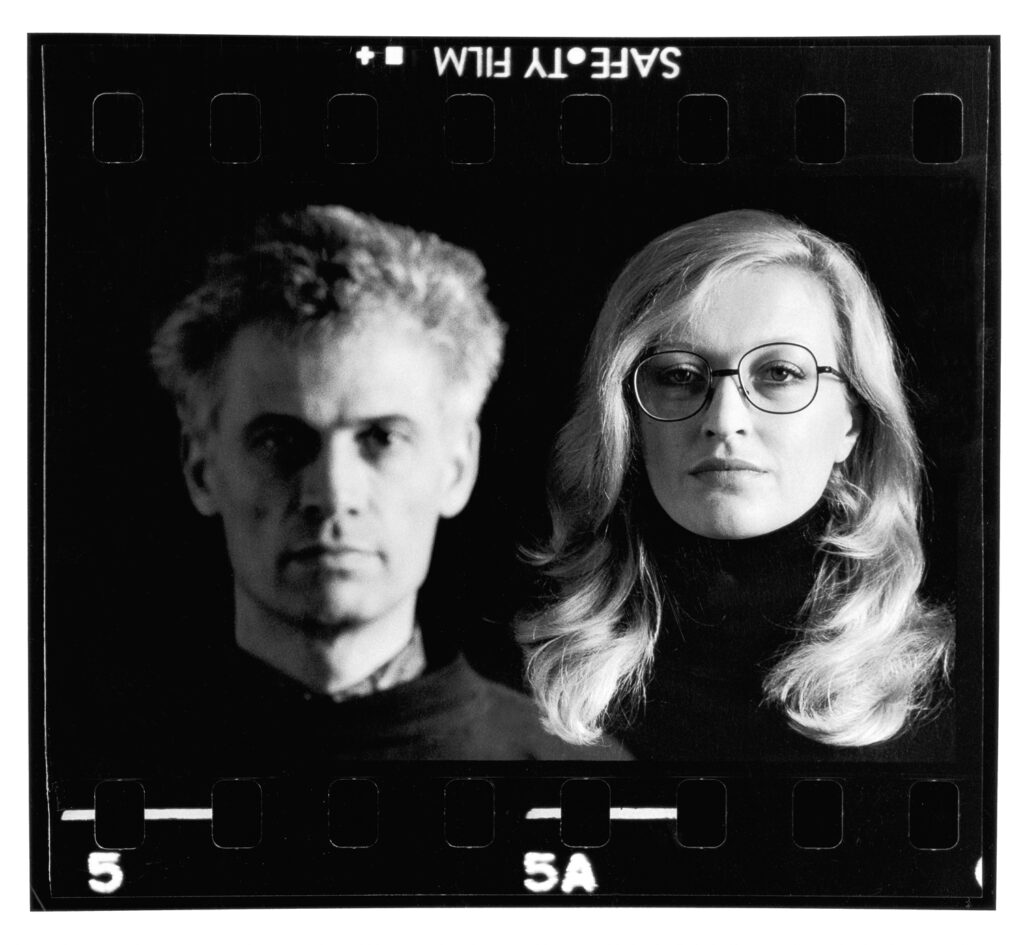13. SELF-PORTRAIT WITH NINI. FOR MELINA AND VALENTINA 1972
I wanted to go back to the theme of the self-portrait, of the photographer’s face either erased or imprecise. Here, on
the same photogram. The photograph shows Nini and me. Nini is in focus, I am out of focus. She is in focus
because I was the one taking her picture, that was how I saw her and that is how I wanted to see her, because I
always want to see with the utmost clarity what is before me, and taking pictures is seeing and wanting to see, first
and foremost. My face is out of focus because, there is only one thing in the tangible world that mankind, “who can
see themselves as they look,” according to Merleau-Ponty, cannot see of themselves: their face.
At most we can offer a rough idea through the memory of other photographs, the narcissism of a reflecting surface,
a few casual references, but the image will remain indistinct, blurred.
When the photographer leaves the camera after having adjusted it so he can move to another place, this reality does not change and he continues to be unable to see himself. By adjusting the focus he can clearly see what is
around him, and he can see it with great clarity, but his face is absent in the lens. Placing a mirror before the camera is naive, because the dialogue is between me and the camera, and not between the camera and the mirror.
